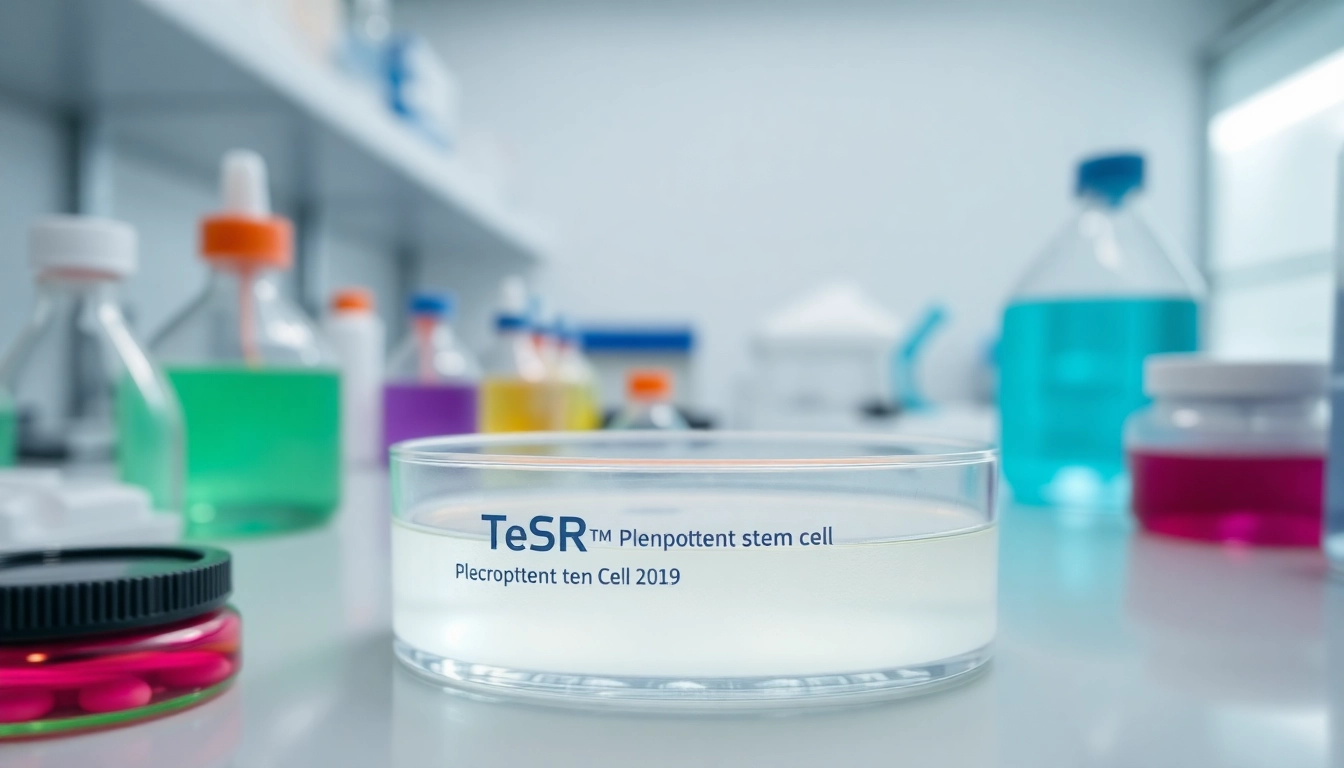Understanding TeSR™ Media: An Overview
The landscape of stem cell research has evolved remarkably over the past two decades, particularly in the realm of human pluripotent stem cells (hPSCs). Key to this evolution has been the introduction of specialized culture media, such as the TeSR™ media family. These products are designed to provide optimal conditions for the maintenance, differentiation, and cryopreservation of embryonic stem (ES) cells and induced pluripotent stem (iPS) cells.
What is TeSR™ Media and Its Importance?
TeSR™ media represents an advancement in cell culture technology, facilitating the growth of hPSCs in a feeder-free environment. Developed from the foundational work of Dr. James Thomson and his laboratory, these media are critical for enhancing the viability and functionality of stem cells. This structure allows research teams to focus on manipulating and applying stem cells without the variability associated with feeder layers, marking a significant milestone in stem cell technology.
Key Features of TeSR™ Media
Among the standout features of TeSR™ media are their formulations, which are meticulously crafted to promote optimal cell health and growth. These media are:
- Free from animal-derived components, ensuring reduced variability and enhancing reproducibility.
- Based on published research, collaborating on empirical data to support effective stem cell culture.
- Available in various formulations tailored to specific types of stem cell maintenance and differentiation.
Applications in Human Pluripotent Stem Cell Cultures
The applications of TeSR™ media extend beyond simple maintenance; they are pivotal in various aspects of stem cell research, including:
- Inducing pluripotency in genetically modified cells.
- Guiding differentiation into specific cell types for regenerative medicine.
- Facilitating cryopreservation techniques designed to maintain cellular integrity during storage.
Differentiating Media in the TeSR™ Family
The versatility of the TeSR™ media family is evident in its range of differentiating media, each designed for specific stem cell applications. Understanding these media helps researchers choose the right environment for their specific needs.
Comparative Analysis of TeSR™ Media
The TeSR™ family includes a variety of products, including:
- mTeSR™ Plus: A robust feeder-free maintenance medium versatile enough for extended intervals between media changes.
- TeSR™-E8™: A simplified, low-protein medium that supports hPSC maintenance with essential components only.
- TeSR™-AOF: A unique formulation that supports animal origin-free research conditions.
Comparison charts showcase these products’ strengths, guiding researchers in making informed decisions.
Best Practices for Choosing the Right Media
Selecting the appropriate TeSR™ media requires comprehension of the specific aims of the research, including:
- Understand the stem cell lineage and desired differentiation outcomes.
- Take into account the duration and conditions of the cell culture process.
- Refer to historical data on how past experiments performed under various media scenarios.
Innovative Applications and Case Studies
Throughout the years, TeSR™ media have been applied in groundbreaking research that includes:
- Development of heart tissues for cardiac repair.
- Creating pancreatic tissues aimed at diabetes treatment.
- Generating neural tissues for studying neurodegenerative diseases.
Case studies illustrate the transformative outcomes achieved by utilizing these media, demonstrating their effectiveness in regenerative medicine.
Benefits of Feeder-Free Systems
Feeder-free systems, such as those involving TeSR™ media, offer numerous benefits that are critical for professional applications in stem cell research.
Advantages of Using Feeder-Free Media
Feeder-free systems eliminate the variability associated with animal-derived substrates, contributing to a more controlled cell culture environment. This translates to improved cell yield, quality, and reproducibility of results.
Minimizing Variation in Stem Cell Cultures
Reduced variation in cultures caused by feeder layers means that researchers can more confidently replicate experiments, leading to more reliable data. For labs aiming for consistent results, this is a crucial advantage.
Maintaining Consistency and Reliability
TeSR™ media provide a stable and consistent environment for culturing hPSCs, which enhances both the quality and functionality of stem cells over time. By maintaining a specific pH and nutrient profile, labs can ensure that their cultures remain viable and productive.
Expert Insights on Culture Techniques
Engaging with pioneers in the field can provide invaluable information on the practical aspects of stem cell culture, particularly those utilizing TeSR™ media.
Interviews with Leading Researchers
Interviews with renowned researchers, such as Dr. Joseph C. Wu and Dr. Christine Mummery, have yielded insights into effective differentiation techniques and challenges in culture maintenance. Their experiences highlight the evolving best practices in the field.
Challenges in Maintaining hPSC Quality
Maintaining hPSC quality presents unique challenges, including genomic stability and preservation of pluripotency markers. The experts emphasize the importance of using high-quality media like TeSR™ that enhance cellular characteristics.
Future Directions in hPSC Research
The future of hPSC research is anticipated to focus on personalized medicine, where type-specific stem cells will cater to individual patient needs. The ongoing R&D in TeSR™ formulations aims to address emerging challenges and enhance their application scope.
Utilizing TeSR™ Media for Advanced Applications
With their refined formulations, TeSR™ media are paving the way for advanced applications in various sectors, including regenerative medicine and drug development.
Applications in Regenerative Medicine
TeSR™ media play a pivotal role in the development of tailored therapies, facilitating the production of specific cell types that can be used for transplantation or therapeutic purposes.
Supporting Differentiation into Specialized Cell Types
Through formulations like ReproTeSR™ and TeSR™-E6, researchers can achieve targeted differentiation into specialized cell types, such as cardiomyocytes and neurons, offering exciting opportunities for disease modeling and personalized therapy.
Regulatory Compliance and Best Practices
As stem cell therapies become more prevalent, adhering to regulatory standards is essential. The TeSR™ product family, including mTeSR™ Plus and TeSR™-AOF, is manufactured under certified Good Manufacturing Practices (cGMP), which assures researchers of their product quality and compliance with regulations.



